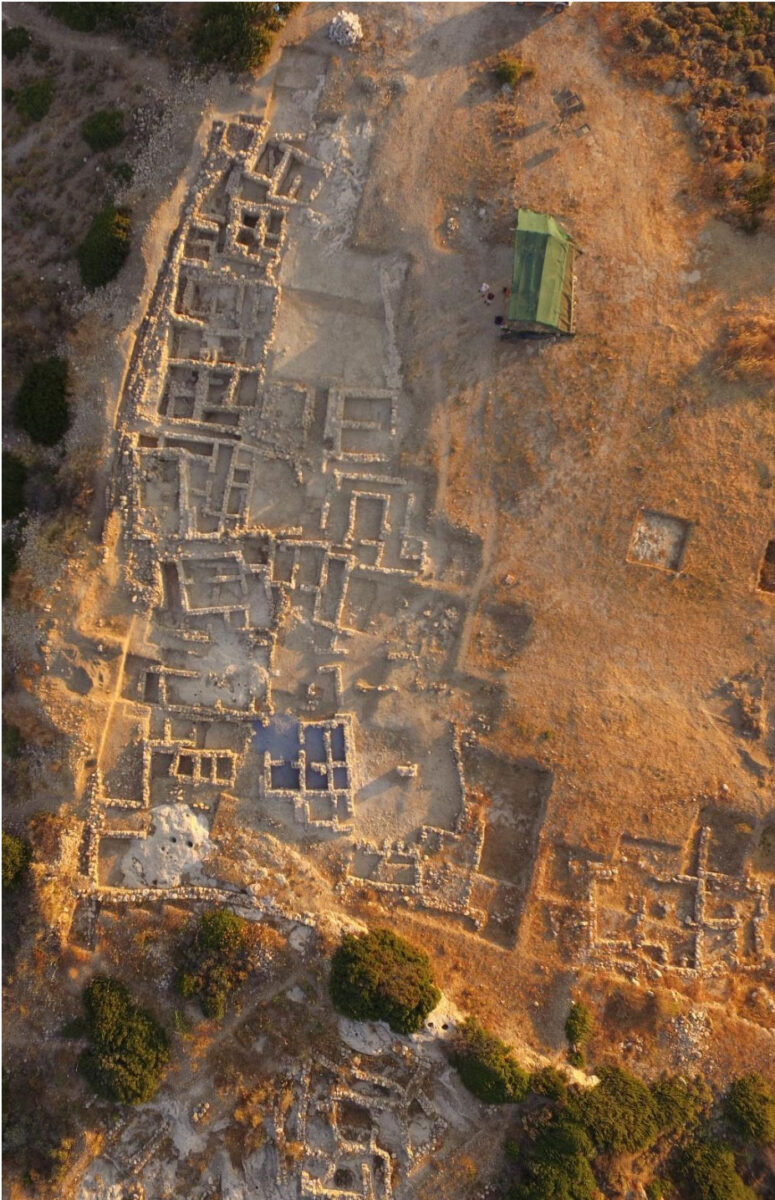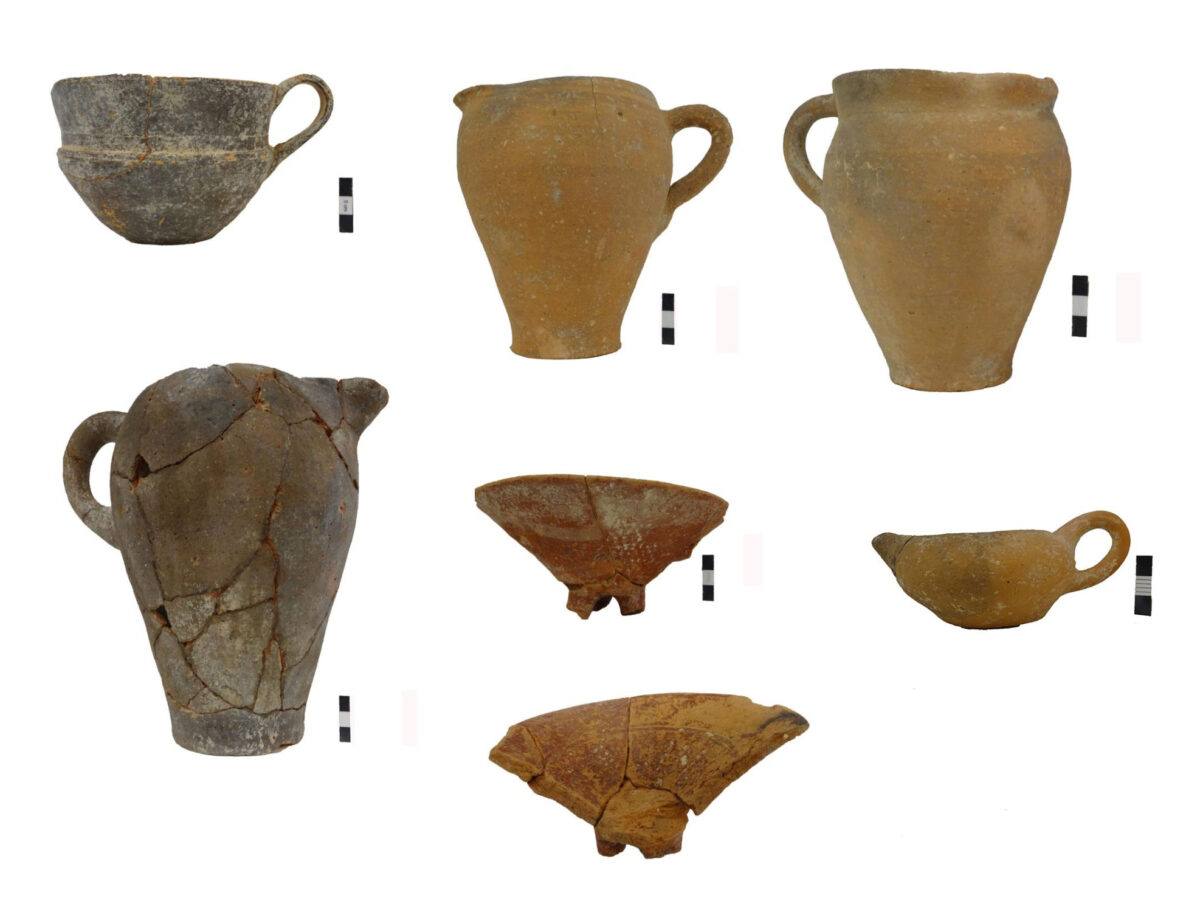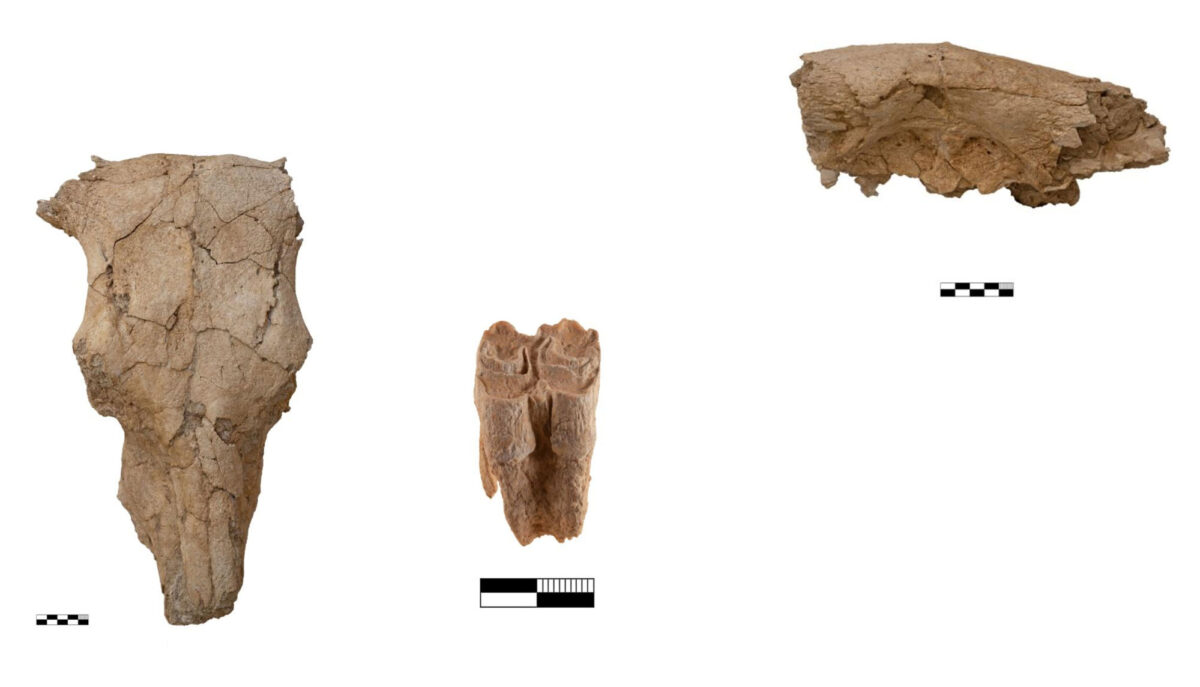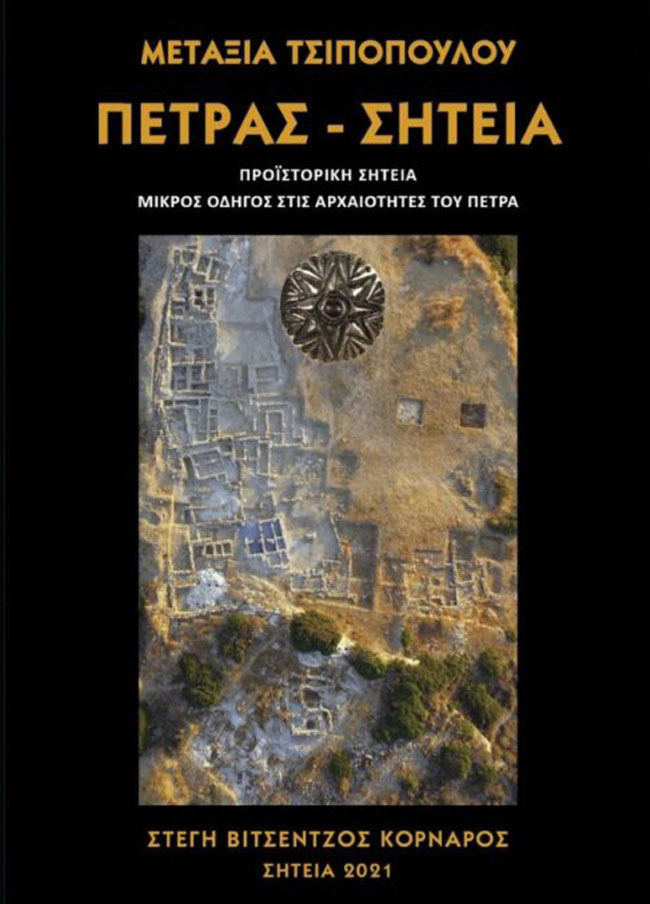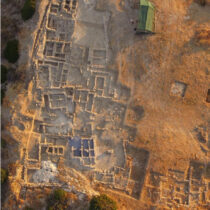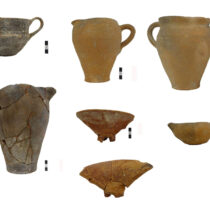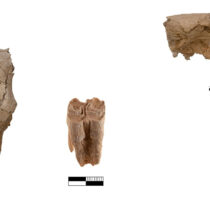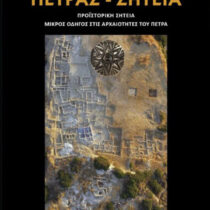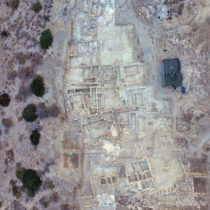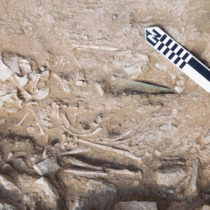“Petras never ceases to amaze us,” says Dr. Metaxia Tsipopoulou, honorary director of the Ministry of Culture and Sports to the Athens and Macedonia News Agency /AMNA. She is head of the systematic excavations carried out for the last 18 years by the Ephorate of Antiquities of Lassithi in the Minoan cemetery and a total of 39 years in the area of the palace and the three settlements of Petras, Sitias in Crete. In the unplundered cemetery of 2800-1800/1750 BC connected to the palatial settlement of Petras and belonging exclusively to elite groups of the population, a 2019 find impressed both the excavators and the scientific community when it was recently presented at 13th International Congress of Cretan Studies.
It is a bull sacrifice. “During the 2019 excavation and while it had been established that there were no burials in Room 8 of Burial Building 9 (1920-1750 BC), we inspected the floor surface and came face to face with a surprise. On the earthen floor, a ritual deposit came to light, unique for Petras and certainly extremely rare for Palaeopalatial Crete. A whole bull’s head was excavated, accompanied by six vases and two triton shells. There were no other bones of the animal apart from the skull. The sacrifice of the bull had obviously taken place in another part of the cemetery”, said M. Tsipopoulou to the AMNA.
Burial Building 9 is one of the largest of the unplundered cemetery, where a total of 26 burial buildings have been found and excavated. These buildings, some as large as 140 sq.m., consist of up to 14 chambers . In addition to the bull’s head, the ritual deposit which dates to around 1850 BC included a cup, three wide-mouthed prochous pitchers, an incense burner and an oil lamp. “With them there were also two triton shells, the well-known “bourou”, which are of great importance in Minoan religion. We find them on signet stones and larnakes/burial coffers; they are something sacred, just as the bull is sacred”, says the excavator.
The vessels and shells were scattered all over Chamber 8, where they were apparently deposited after their use in the ritual. The latter would have involved carrying small pieces of coal and aromatic herbs with the incense burner, liquid in the prochous pitchers, a possible drawing of liquid with the cup, and a sprinkling of the bull’s head, while, since the chamber had no roof, the oil lamp would have served either to carry the fire to light the contents of the censer or for illumination if the ritual had taken place at night. “We do not know on what occasion this elite family sacrificed an extremely valuable animal. Perhaps it had been preceded by a strong earthquake or a pandemic or a dangerously fatal natural phenomenon such as a tsunami. It is known from mythology that the bull, among others, was associated with the sea. What we know for certain is the dating of the finds, because the vessels are typical of the period .The cemetery yielded many richly decorated vessels (e.g. colourful Kamares ware) inside tombs and in ceremonial spaces, but those used for this specific ritual act were utilitarian. The bull’s skull was deposited after the animal had been eaten. The archaeozoological study showed that the tongue, always a good snack, had been pulled out, causing the lower jaw to break slightly. The vessels were left at the site because, as in other societies, everything associated with death never returned to the settlement to be used, but was broken and left in the cemetery grounds. The most valuable find of the assemblage is the bull, whose sacrifice is most probably the most ancient ritual conducted in a Minoan tomb, related with this extremely important animal”, points out Ms Tsipopoulou to the AMNA.
We asked the excavator if it could perhaps be connected with a particularly prestigious person who was buried in the same place. “Yes, it could, but no burial was found in Room 8. Perhaps it was related to a burial or burials in other rooms of the Building. The burials, with very few exceptions, are not primary in the Petra cemetery, but come from the exhuming of the remains of a dead person and transferring them to a burial building together with others. The picture presented by the burial buildings is of a large number of bones belonging to many individuals together with important burial offerings: 83 signet stones, many of which are semi-precious, 300 stone vessels and well over 5,000 clay vessels, but also many made of gold, silver and bronze, as well as thousands of small gold, silver and stone beads that were sewn onto shrouds. The cemetery includes two extensive community ritual spaces, but the bull sacrifice is exclusively for the elite family that was connected to Burial Building 9,” Ms Tsipopoulou answers.
Another interesting fact of the cemetery is the presence of double stone horns with a coating of mortar, dedicatory offerings among the earliest known in Crete, a pair of which were found just outside Room 8. After the ritual act the latter was covered with soil and was never reused, unlike in the rest of the areas of Burial Building 9.
It should be noted that the conservation of the bull’s head, very carefully excavated and transferred with a lot of soil to the conservation workshop of the Institute of Aegean Prehistory in Pachia Ammos ,Ierapetra, was a painstaking process that lasted two months and was carried out by Kathy Hall head of the conservation workshop of the Study Center of Eastern Crete of the Institute of Aegean Prehistory. The bull’s head was studied by Oxford University paleozoologist Dr. Valasia Isaakidou. It was probably a domesticated animal about 5 years old.
A book on Petras
It is important that the heads of large scale,long-term excavations write authoritative guides for the general public, which are useful both when touring the site and for detailed reading before or after. Such a guide to the antiquities of Petras, written by Dr. Metaxia Tsipopoulou, was recently published by Stegi Vitsentzos Kornaros, the civic non-profit company based in Sitia. The guide that is concise and easy to follow is called Petras – Sitia. Prehistoric Sitia. A short guide to the antiquities of Petras and it includes the archaeological site of the palace that can be visited – the most complete hieroglyphic archive of Crete was excavated to date in a part of the palace – the settlements, the two Paleopalatial and Late Minoan walls. And lastly the Pre-palatial and Palaeo-palatial cemetery, the preeminent unplundered elite cemetery, as the findings of its excavations and studies have changed much of the hitherto commonly accepted facts about the Minoan civilization, especially in its early phases.
